May offensive of the Northern Corps
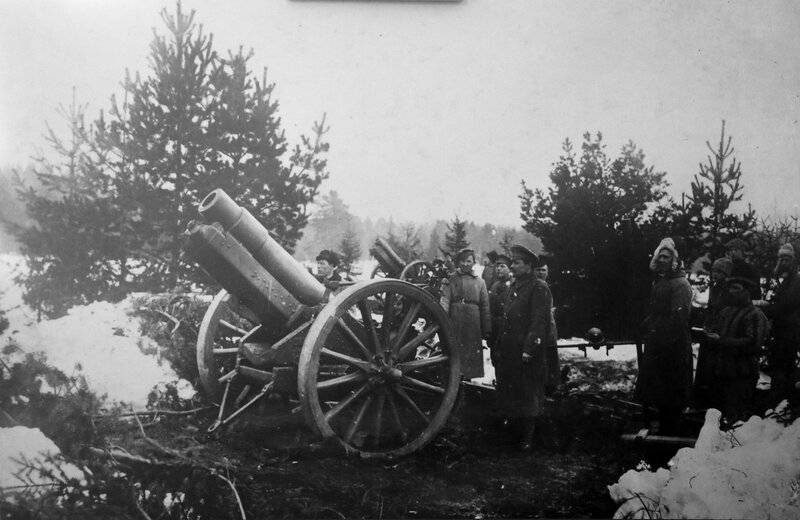
Baltic on fire
At the end of 1918, three military-political forces prevailed in the Baltics: 1) German troops, which after the surrender of Germany were not yet fully evacuated. The Germans generally supported local nationalists so that local state formations were oriented toward Germany; 2) nationalists who relied on external forces, Germany, and then the Entente (mainly England); 3) Communists who were going to create the Soviet republics and reunite with Russia.
Thus, under the cover of German bayonets, nationalist and white troops were formed in the Baltic States. Local politicians created "independent" states. At the same time, representatives of the workers' and communist movements sought to create Soviet republics and unite with Soviet Russia.
As the German troops were evacuated, Moscow was able to return the Baltic states under its authority. Soviet national armies were formed on the territory of the RSFSR to liberate and consolidate the Baltic territories. The most powerful force was the Latvian Rifle Division (9 regiments), which became the basis of the Red Army of Soviet Latvia. Estonia was to be occupied by red Estonian units with the support of the 7th Red Army and the Red Baltic fleet. The main blow was inflicted on the Narva direction. Latvia was to be occupied by Latvian rifle units. In January 1919, the Latvian army was created. It was headed by Wacetis, who at the same time remained commander in chief of all the armed forces of the RSFSR. The liberation operations of Lithuania and Belarus were to be carried out by the Western Army.
In early December, the 1918 of the Reds tried to take Narva, but the operation failed. German divisions still remained there, which together with the Estonian forces defended Narva. The battle for Estonia took a protracted nature. The nationalist Estonian government, relying on the remnants of the German troops, Russian and Finnish whites from Finland, created a rather strong army that successfully resisted. Estonian detachments successfully used internal operational lines, relying on two cross-cutting railway lines from Revel (Tallinn), and widely used armored trains. The Red forces had to abandon the idea of a “blitzkrieg” and systematically attack Revel, Yuryev and Pernov. For the suppression of the enemy needed considerable force.
At the same time was the liberation of Latvia. Here the red Latvian units advanced in three directions: 1) Pskov - Riga; 2) Creutzburg - Mitawa; 3) Ponevezh - Shavli. The bulk of the population, peasants who suffered from the dominance of landlords and large landowners and tenants, supported the Reds. In Riga, self-defense units were formed - the Baltic Landswehr, which included German, Latvian and Russian companies. Headed by General von Loringofen. Here, Major Bishof’s German Iron Division was created — a volunteer unit such as the Kornilov shock regiment, which was supposed to maintain order in the crumbling German army, which was quickly decomposed during the evacuation and more and more susceptible to revolutionary sentiment.
However, this did not prevent the Red Army from taking the city. East of Riga, the Reds could not be stopped. The newly formed Landswehr companies could not stop the regular regiments. 3 January 1919 The Reds occupied Riga. This was facilitated by the successful uprising of the Riga workers, which began a few days before the arrival of the Red forces and disorganized the rear of the enemy. The Baltic Landswehr and the German volunteers tried to stay in Mitau, and the Reds occupied Mitava in a few days. In mid-January, the 1919 began an offensive in Courland on the wide Vindava-Libau front. The advancing red troops occupied Windau, threatened Libau, but at the turn of the river. Windau stopped them. The German barony in alliance with the Baltic nationalist bourgeoisie offered stubborn resistance. Not only local formations fought the Reds, but also volunteer detachments from the remnants of the German army 8.
The offensive of the Red Army has already exhaled. The first offensive outburst dried up. Latvian riflemen, hitting their homeland, quickly lost their former combat capability. Symptoms of decomposition of the old army began - a drop in discipline, a massive desertion. Front stabilized. In addition, the struggle was complicated by the fact that the Baltic States were already ravaged by world war and the German occupiers. The Germans systematically plundered the region during the occupation, and during the evacuation they tried to pick up everything they could (bread, cattle, horses, various goods, etc.), deliberately destroyed roads and bridges to impede the advance of the Red Army. Smoot led to rampant various gangs. Hunger and epidemics. As a result, the material supply of the Red Army deteriorated sharply, which also had a most negative effect on the morale of the Red Army.
Soviet Russia, which fought on the Northern, Southern and Eastern fronts, could not render serious material assistance. As a result, the formation of the new Soviet Latvian army went hard. The struggle for Lithuania proceeded in even more unsatisfactory conditions. The Soviet government of Lithuania, due to the lack of a sufficient number of personnel, could not form its army. Petty-bourgeois sentiments were strong in the local population, support for the Bolsheviks was minimal. Therefore, the local councils had to direct the 2 Pskov division to help. The fight was hard, as in Estonia. In addition, the Germans came to the aid of the Lithuanian nationalists.
Soon, Germany, which capitulated and was occupied with serious internal problems, replaced Great Britain. The British fleet dominated the Baltic. The landing troops of the Entente captured coastal cities: Revel, Ust-Dvinsk and Libau.
The government of Ulmanis entrenched in Libava, under the protection of the British. The formation of the Latvian army continued here. At the same time, Germany continued to provide major assistance, which wanted to create a buffer near the borders of East Prussia so that the Reds would not reach it. Germany helped the Latvian government with finances, ammunition and weapons. A significant part of the Volunteer Iron Division was transferred to the service of Latvia. German soldiers were promised Latvian citizenship and the possibility of acquiring land in Kurland. A white Russian Libavsk detachment was also created here.
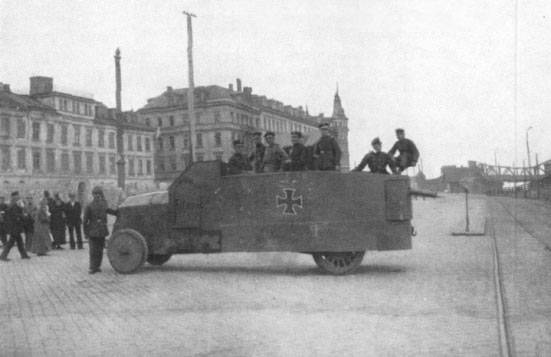
Feature of the Baltic
The peculiarity of the then Baltic was the predominance of Germans and Russians in the cultural and economic life of the region. Estonians and Latvians were then backward and primitive marginal peoples, darker than the bulk of the central Russian peasantry. They were extremely far from politics. The local intelligentsia was very weak, only beginning to form. Almost the entire cultural layer of Estonia and especially Latvia was Russian-German. The Baltic (Baltic, Baltic) Germans then made up a significant percentage of the local population. German knights conquered the Baltics in the Middle Ages and for centuries were the mainstream population, having a strong influence on the culture and language of the locals.
Therefore, the Baltic Germans and at the beginning of the 20th century constituted the culturally and economically dominant class in the region - the nobility, the clergy, and a large part of the middle class - urban residents (burghers). They did not assimilate with Estonians and Latvians, while maintaining the position of a social elite. Between the Germans and the Latvian-Estonian peasants and the lower ranks of the city lay age-old enmity. She was aggravated by agrarian overpopulation. So, by the beginning of the twentieth century, the Germans still owned almost all the forests of the Baltic States and 20% of arable land. And the number of indigenous people, landless peasants was constantly growing (which caused a massive resettlement of the Baltic peasants in the Russian provinces). It is not surprising that the young Baltic states carried out agrarian reforms aimed at the radical expropriation of German estates.
Thus, in the Civil War in the Baltic, Estonians, Latvians, Lithuanians, Germans and Russian whites had completely different interests. Opponents of the Bolsheviks were not a united front and they had a lot of contradictions. However, in the beginning, when the threat of a “red blitzkrieg” arose, the opponents of the Bolsheviks were still able to unite.
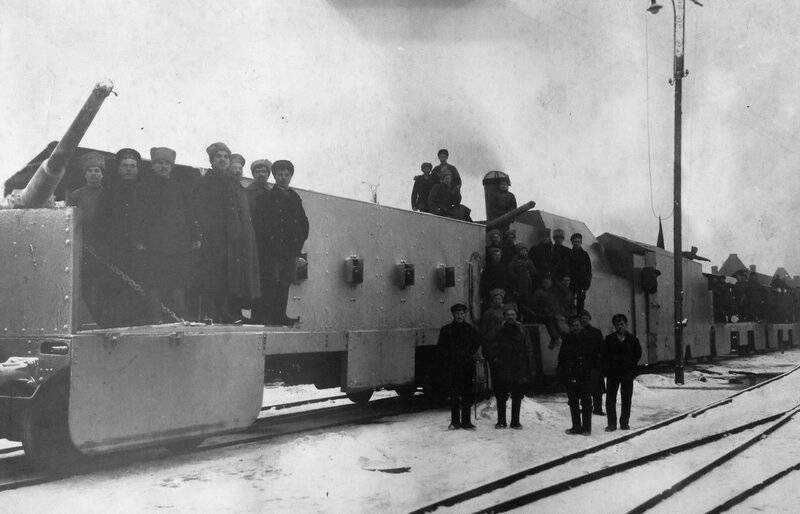
The overall situation in the spring is 1919. North building
At the end of March, the 1919 of the year in the hands of the Reds was all of Latvia, except for the Libau district, where the interventionists ran. But the strategic position of the Red Army was difficult, as the situation in Estonia and Lithuania was dangerous. Latvian red shooters had to allocate troops to the flanks, against Estonia and Lithuania. As a result, the relatively weak forces of the Latvian army were scattered across a broad front. Especially weak was the center, the Courland direction. There were no reserves, the formation of the 2 division was going badly, due to problems in material supply.
Estonia was convenient for defense. It was covered by the Peipsi and Pskov lakes, rivers and swamps. In addition, the main attack of the Red Army fell on Riga, the best red parts were concentrated here. The direction to Revel was subsidiary. The weaker units attacked Estonia, mainly from the Petrograd district, which retained the negative features of the formerly decayed capital regiments.
Estonian troops in the winter were significantly strengthened due to the formation of Russian white troops. In the fall of 1918, with the support of the German interventionists, the formation of the “Russian volunteer Northern army” began. The formation of the first division was going on in Pskov, Ostrov and Rezhitsa (Pskov, Ostrovsky and Rezhitsky regiments, altogether about 2, thousand bayonets and sabers). Also in the "Northern Army" included troops of various adventurers, like ataman Bulak-Balakhovich, who first fought for the Bolsheviks, and then ran to the white (the Reds were planning to arrest him for the bloody actions in the village and theft).
The corps was to be headed by Count K. A. Keller (a talented commander of the cavalry division, and then the cavalry corps, “the first piece of Russia”), but did not reach the destination and was killed in Kiev by the Petliurists. Temporarily commanded the white formation of Colonel Nef. In November 1918, the backbone of the Pskov Corps, White left Pskov and began to retreat after the Germans, so it was not able to resist the Red Army on its own. In December 1918, the corps switched to Estonian service and was renamed from Pskov to North. In December, the corps, together with the Estonian troops, resisted the red in the Yuryevsk direction.
The Baltic state entities actively supported England. First of all, Estonia, where the local government immediately led a national-chauvinistic policy towards the Germans and Russians. The lands of the German nobility were nationalized, the German officials were sacked, the Germans were ousted. London was interested in dismembering and weakening Russia, and therefore helped nationalist regimes. The British fleet fettered the actions of the Red Baltic Fleet. The British provided assistance to local regimes with weapons, ammunition, equipment, and in the yard of cases with direct military force, first of all it concerned coastal points. At the same time, the British did not help the White Russians until the summer of 1919, since the Northern Corps was founded by the Germans, and the White Guards were in favor of a "united and indivisible Russia." Whites did not recognize the independence of Estonia, which became their base. That is, whites were potential opponents of local nationalists.
The German and Latvian landowners, representatives of the bourgeoisie, who fled from Latvia, where the Reds won, also provided significant assistance to the Estonian formations. As a result, attempts by opponents of the Reds to go on the offensive from Narva to Yamburg and further succeeded. Success was accompanied by their attack on Valk and Verro. This forced the commander of the army of Latvia (Slaven was appointed to this position in February 1919) to allocate an additional three rifle regiments against White Estonians. The successes of the Red forces in the Lithuanian direction also stopped, as German volunteers appeared in the region of the Kovno province, which strengthened the position of the local Lithuanian government. Also in Lithuania, the Polish troops fought against the Reds.
It should be noted that the spring of the year 1919 was for Soviet Russia a time of extreme tension of all forces on the Southern and Eastern Fronts. In the south and east were the decisive battles of the Civil War, so the Red Heading could not send sufficient forces and means to the Western Front. At the same time, spontaneous "kulak" riots blazed in the immediate rear of the Reds, all over northwest Russia, often led by deserters who had military training and fled with weapons. The country continued the Peasant War, the peasants rebelled, dissatisfied with the policy of "war communism", surplus and mobilization of the army. For example, in June 1919 of the year in three provinces of the Petrograd Military District more than 7 thousand deserters were counted. The Pskov Governorate was especially notable, the riots in which were continuous.
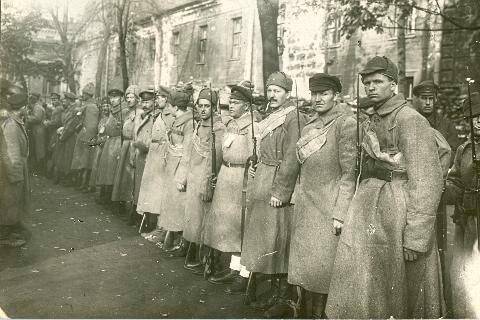
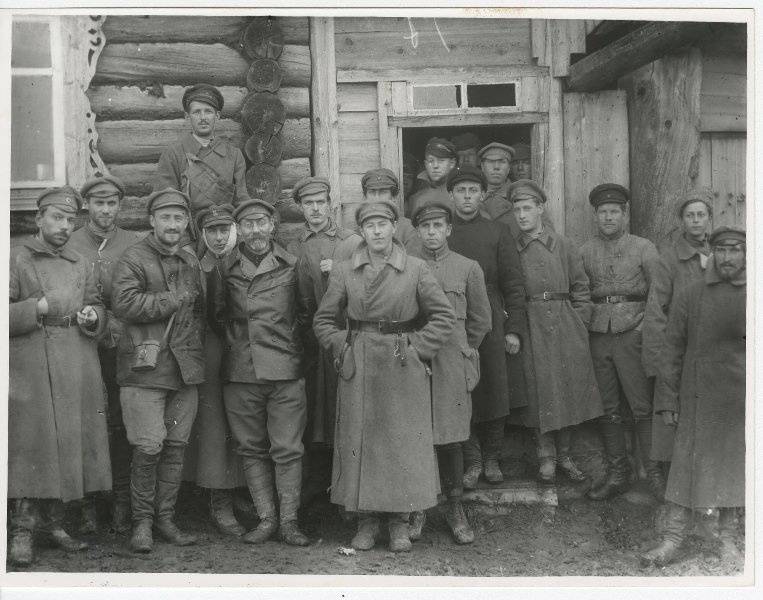
To be continued ...
- Alexander Samsonov
- Smoot. 1919 year
How the British created the Armed Forces of the South of Russia
How to restore Soviet power in Ukraine
How Petliurists led Little Russia to a complete catastrophe
How defeated Petliurism
Give the boundaries of 1772 of the year!
Battle for the North Caucasus. How to suppress the Terek Uprising
Battle for the North Caucasus. CH 2. December battle
Battle for the North Caucasus. CH 3. The January accident of the 11 Army
Battle for the North Caucasus. CH 4. How the 11 army died
Battle for the North Caucasus. CH 5. Capture of Kizlyar and the Terrible
Battle for the North Caucasus. CH 6. Furious assault of Vladikavkaz
How Georgia tried to seize Sochi
How the Whites crushed the Georgian invaders
The war of February and October as a confrontation between two civilization projects
How did the "Flight to the Volga"
How Kolchak's army broke through to the Volga
Catastrophe of the Don Cossacks
Verkhniyon uprising
How "Great Finland" planned to seize Petrograd
"All to fight with Kolchak!"
Frunze. Red Napoleon
The missed opportunities of the army of Kolchak
Information